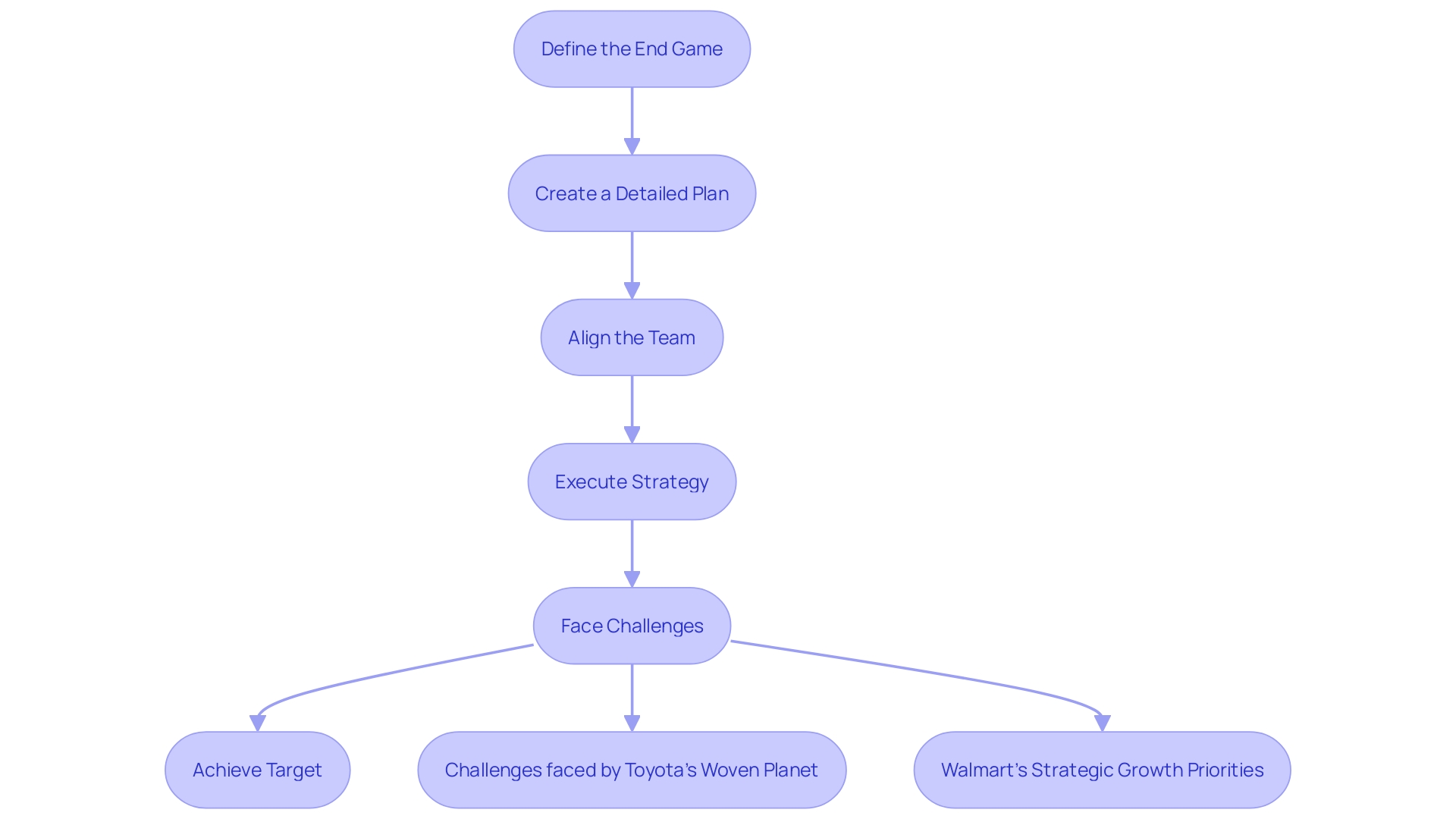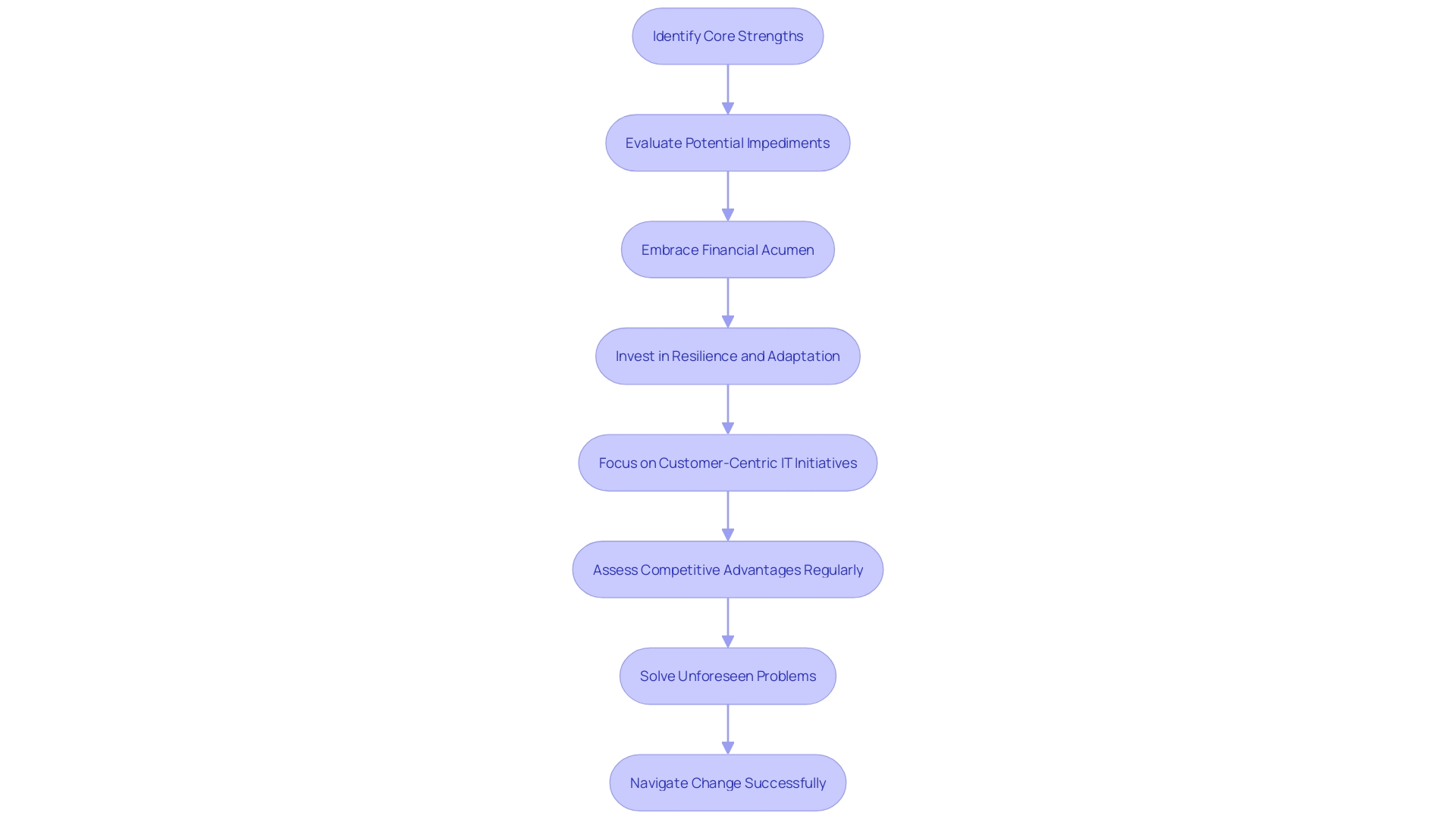Introduction
A solid vision and coherent strategy are essential for any successful enterprise. They provide purpose, direction, and a roadmap to achieve objectives. Without them, organizations can become disoriented and struggle to make strategic decisions.
However, it's crucial to strike a balance between an ambitious vision and realistic, actionable strategies that fit within operational constraints and timelines. This article explores the importance of clear vision and strategy, effective leadership, and adaptability and resilience in navigating the complexities of the modern business landscape. By understanding these fundamental principles, CFOs can drive growth, innovation, and success for their organizations.
Clear Vision and Strategy
A solid vision and coherent strategy are the bedrock of any thriving enterprise. They provide a company with a defined purpose and direction, coupled with a detailed plan to reach its objectives. Lacking a clear vision, organizations can become disoriented and face challenges in making strategic decisions.
A robust strategy, on the other hand, delineates the necessary steps and measures to achieve set goals, ensuring the entire team is synchronized and advancing toward a unified target.
Reflecting on the challenges faced by Toyota's Woven Planet, it's clear that the vision of creating software to set an industry standard was ambitious and forward-thinking, as vehicles are increasingly becoming electric, internet-connected, and autonomous. However, the execution fell short; the project's vast scope and complexity were misaligned with the need for timely deliverables in the fast-paced automotive sector. This illustrates that while an expansive vision can be inspiring, it must be tempered with realistic, actionable strategies that fit within the company's operational framework and timelines.
To bridge the gap between strategy and innovation, it's crucial to anchor innovation efforts to strategic growth priorities and the unique strengths of the organization. This linkage ensures that innovations are not just creative ideas but are directly contributing to the company's bottom-line growth. Addressing this, Walmart exemplifies an approach that focuses on solving real-world problems, whether it's enhancing the customer experience or optimizing internal processes, showcasing a strategy deeply rooted in practical challenges and opportunities.
In the realm of digital strategy, it's critical to fall in love with the problem, not the preconceived solution. This mindset fosters a culture where innovation is driven by the desire to address genuine needs, leading to more relevant and impactful outcomes. As strategies evolve to meet the dynamic business landscape, they must remain hypotheses, constantly tested against the market's strengths, weaknesses, opportunities, and threats, ensuring that the company's competitive edge is sharpened and its vision is realized.

Effective Leadership
Leadership transcends mere management; it's about vision, inspiration, and action. A leader's capacity to motivate and guide teams is instrumental in carving a path to success. They set an exemplary standard, cultivate a constructive and high-performing work atmosphere, and steer the organization towards its collective objectives.
Strategic decision-making, adept delegation, and unwavering support are the hallmarks of effective leadership. Such leaders are catalysts for innovation, encouraging their teams to collaborate and championing a culture of perpetual growth and refinement.
Costco’s leadership exemplifies this by their disciplined approach to innovation and resistance to distractions. Despite external pressures, they declined to implement curbside delivery during the pandemic, as it did not align with their profitability goals. This decision-making process reflects a clear vision and a commitment to long-term strategy over short-term gains.
Starbucks represents another paradigm of leadership, fundamentally understanding that people are the solution to nearly every challenge a business faces. By prioritizing the development and acquisition of strong leaders, Starbucks showcases how people-centric leadership can drive an organization forward.
Leadership also involves evolving with the times and customer needs, as seen in Costco’s expansion of services like pharmacy, meat, and optical departments, illustrating how successful leaders adapt and innovate while keeping the core business strong.
In today's fast-paced business world, as publications like The CEO Magazine, The Economist, and Forbes suggest, leaders are also tasked with navigating digital transformations—a formidable challenge, given that 70% of such initiatives reportedly fail to meet their objectives. A shared vision, engagement, and investment in capability building are critical to mitigating the risks associated with these complex transformations.
Quotes from industry leaders reinforce the significance of people in a company’s success. Managers are tasked with unlocking the potential of their team members by providing support, respect, and trust, as highlighted by the CEO of Starbucks. Apple's leadership, known for its focus and discernment in entering new markets, reflects a deep commitment to quality and significant contribution before considering expansion.
Furthermore, the ability to handle setbacks, as demonstrated by Nvidia's CEO during tumultuous times, is an essential trait of resilient leadership. It’s about maintaining focus and managing effectively even when faced with the prospect of failure.
Adopting a proactive stance towards emerging trends and anomalies is paramount for leaders. Weak signals may indicate significant changes on the horizon, requiring leaders to be well-informed and ready to capitalize on the strengths of AI, while also understanding its limitations. Continuous learning and skill adaptation are essential in the current climate of uncertainty and rapid change.
In essence, leadership is about more than just running a business; it's about shaping it. By fostering ownership, accountability, and collaboration, leaders can drive transformative agendas and navigate the complexities of the modern business landscape.
Adaptability and Resilience
Adaptability and resilience are two vital attributes for any business looking to thrive amidst the whirlwind of contemporary challenges. The importance of these qualities is exemplified by the insights shared at the first Annual Drucker Forum in 2009, which coincided with one of the worst economic crises in recent history. The words of Peter Drucker, the "father of modern management," resonate profoundly as he asserted, “A person can perform only from strength.” Today's businesses must identify and leverage their core strengths, yet remain vigilant and responsive to rapidly changing circumstances.
For instance, when considering areas that could significantly impede an organization, executives should evaluate aspects like performance targets, decision-making processes, and key personnel adaptability. The downfall of Nokia amidst the smartphone revolution serves as a stark reminder of what happens when a company fails to respond swiftly to technological advancements. Nokia's hesitance to embrace the touch screen phone innovation led to its decline in the face of Apple's iPhone success.
In the face of volatility, financial acumen becomes a cornerstone of resilience. As disruptions become the norm, agile financial strategies take center stage. Embracing flexible budgeting, capital allocation, and risk management not only safeguards assets but also unlocks growth potential.
A study on the financial benefits for companies investing in resilience and adaptation emphasizes how such measures contribute to the bottom line and the wellbeing of people and the planet.
The last decade's focus on digital transformation exemplifies the shift towards customer-centric IT initiatives, emphasizing the importance of continuous adaptation rather than a one-off effort. Companies must remain on their toes, always ready to adjust their strategies and operations to maintain a competitive edge.
Moreover, regular assessments and refinements of competitive advantages are crucial, as they involve an interplay of assets, aspirations, market realities, and the supply-demand dynamics. As volatility represents opportunity, organizations must be equipped to open the door to new possibilities. This involves solving unforeseen problems, enhancing efficiency, and driving clarity to uncover value within the ever-shifting risk landscape.
Mathew Lehnig, a retired Navy SEAL officer, encapsulates this ethos by stating, “During business reorganization, constant change is inevitable. Although uncertain and complex, we must remain agile and adaptable to ensure the desired outcomes.” His perspective underscores the imperative for businesses to integrate organizational agility into their strategic considerations to navigate the currents of change successfully.

Conclusion
A solid vision and strategy are crucial for success. It is important to balance ambition with realistic and actionable strategies. Effective leadership motivates teams and adapts to changing needs.
Adaptability and resilience are essential in a rapidly changing business landscape. Financial acumen and agility are key in volatile times.
In conclusion, a clear vision, effective leadership, and adaptability are essential for CFOs. By balancing ambition with realism, fostering a people-centric culture, and remaining agile, CFOs can navigate complexities and drive growth.




